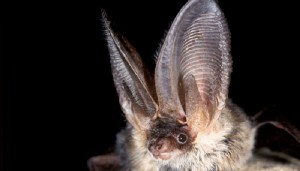DA 16-476
Released: April 29, 2016
TOWER CONSTRUCTION GUIDANCE FOR PROTECTION OF NORTHERN LONG-EARED BAT UNDER THE ENDANGERED SPECIES AC T
T
On April 2, 2015, the northern long-eared bat (NLEB, Myotis septentrionalis) was listed as threatened under the Endangered Species Act (ESA), due to the continued spread of white nose-syndrome (WNS). On January 14, 2016, the U.S. Fish and Wildlife Service (USFWS) released a final rule requiring protective measures related to the NLEB. With the issuance of this rule, tower projects in the NLEB’s range must consider potential effects on the NLEB as part of their environmental review. With this guidance, the Wireless Telecommunications Bureau of the Federal Communications Commission (FCC) provides detail on required and recommended steps for the tower industry.
Background
The NLEB lives in forests and hibernates in caves, mines, and other locations. Its range includes much of the eastern and north central United States, Canadian provinces from the Atlantic Ocean west to the southern Yukon Territory, and eastern British Columbia. Since 2007-2008, Pseudogymnoascus destructans, a non-native white fungus, has caused WNS in hibernating bats and has resulted in millions of bat fatalities. By infecting bat muzzles, ears, and wings, WNS disrupts the bats’ hibernation and causes starvation. As the main threat to the NLEB, WNS has caused significant declines in bat populations, and is continuing to spread throughout the NLEB range.
Obligations
Registering and licensing operations from towers and other wireless facilities are federal activities that trigger environmental obligations for the FCC. The FCC has delegated some of these responsibilities to industry, and the FCC rules accordingly impose enforceable duties related to tower construction so that the agency can meet these obligations. Accordingly, all tower construction projects within the NLEB’s range, including those outside of the WNS Zone, must follow the USFWS process for federal actions at http://www.fws.gov/Midwest/endangered/mammals/nleb/KeyFinal4dNLEBFedProjects.html.
Similarly, if a project requires consultation with USFWS, the party will be consulting pursuant to Section 7 of the ESA as a “designated non-Federal entity.”
The same website also sets out the USFWS’s “Optional Framework to Streamline Section 7 Consultation for the Northern Long-Eared Bat” (Framework), which provides parties with the option of pursuing a streamlined Section 7 consultation under the ESA under certain circumstances. The USFWS provides guidance based on whether a particular project may affect the NLEB, whether the project will take place inside the WNS zone, its proximity to potential and actual NLEB habitat, and whether tree removal will take place. If no action is required with respect to the NLEB, or if the Framework applies, the FCC does not require additional reporting. If, however, project-specific section 7 formal consultation is necessary, the FCC must initiate that process with the USFWS. Once formal consultation is completed, the applicant must submit the resulting Biological Opinion with an environmental assessment as part of its application to the FCC. Additional Recommended Measures for NLEB Conservation. To minimize adverse effects on the NLEB, we encourage industry to follow these USFWS recommendations:
- Conduct tree removal activities outside of the NLEB pup season (June 1-July 31) and active season (April 1-October 31) to minimize impacts to pups at roosts not yet identified.
- Avoid clearing suitable spring staging and fall swarming habitat within a five-mile radius of known or assumed NLEB hibernacula during the staging and swarming seasons (April 1-May 15 and August 15-November 14, respectively).
- Maintain dead trees and large trees when possible.
- Use herbicides and pesticides only if unavoidable.
- Minimize exterior lighting, opting for down-shielded, motion-sensor security lights under towers instead of constant illumination.
Additional information on the NLEB may also be found at http://www.fws.gov/Midwest/endangered/mammals/nleb/index.html.
For further information on FCC obligations for NLEB protection under the ESA, contact Joelle Gehring, Biologist, Federal Communications Commission, (202) 270-4435, Joelle.Gehring@FCC.gov.
Read More: Tower Construction Guidance
